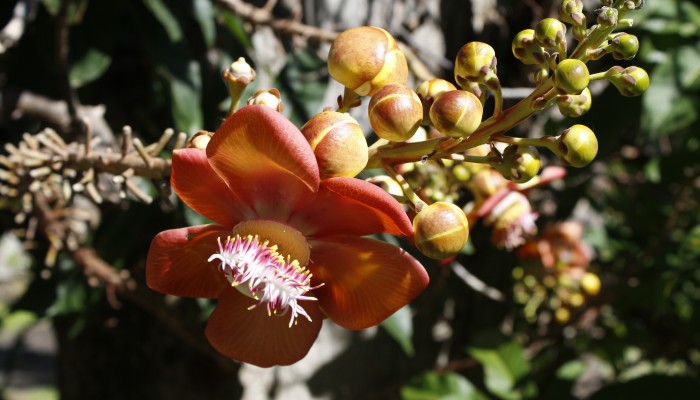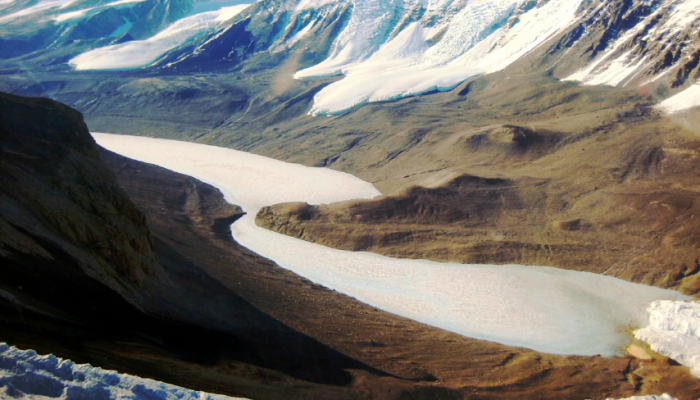The oldest Botanical Gardens in the western hemisphere lie on the outskirts of Kingstown, St Vincent, in the Windward isles of the West Indies – and what a gem they are. As the ironwork above the entrance declares, the gardens were founded in 1765. The original ambition of Robert Melville, the then Governor in Chief of the Windward Isles, was to establish a horticultural research station for ...[Read More]
Geology Jenga
10 Minute Interview – Earth Science Communicator
Dan and I are both advocates for the communication of science,via all possible means, and that is why this week’s interview is close to our hearts. Sarah Day’s role at the Geological Society of London focuses on conveying the importance of the study of the science behind how our planet works. I met Sarah about a year ago, when I invited her to give a talk here at Liverpool. It was a h ...[Read More]
GeoSphere
Some 2014 Ph.D Goal Setting
For my first post of the new year I thought it might be a good idea to make some resolutions, especially since everyone else is doing it. Part of doing graduate work is setting goals, ignoring those goals until the week before, and then working 22 hour days to achieve them. Ian, (my supervisor), if you’re reading this I swear that is just a joke! In all seriousness though I am hoping that 20 ...[Read More]
Between a Rock and a Hard Place
Science Snap (#15): Big freezes
Satellite images are not just wonderful for science, they also capture public interest during periods of intense and news grabbing weather. Earlier this month North America was gripped by a prolonged Arctic Chill, plunging the continent into freezing temperatures and smashing temperature records in the process. Consecutive satellite images tracked the southward progress of the freezing continent t ...[Read More]
Geology for Global Development
Diamonds aren’t Forever
Boom & Bust in the Namib Desert Namibia is mostly desert. Like its neighbour South Africa, the country was gifted with diamond-bearing Kimberlites. The Sperrgebiet (or “forbidden territory”), where the diamonds are concentrated, is strictly off-limits to the public. Namibia’s natural resources have played an important role in shaping the development of this inhospitable landscape. ...[Read More]
Geology Jenga
A round-up of some newsworthy geomagnetism stories
Happy New Year to you all! We’ve had a long Christmas break at Geology Jenga, but we are back! For 2014 we’ve got some really interesting 10 minute interviews lined up, as well as the continuation of the ‘Making the most of your PhD’ series and musings on all the things that interest Dan & I. So without further ado, let’s get started! The past few weeks and months have seen some exciting newsw ...[Read More]
An Atom's-Eye View of the Planet
From synchrotron to super-volcano – buoyed up by magma
Devastating supervolcanoes can erupt simply due to changes that happen in their giant magma chambers as they slowly cool, according to a new study. This finding marks the first time researchers have been able to explain the mechanism behind the eruptions of the largest volcanoes on Earth. Geologists have identified the roots of a number of ancient and possible future supervolcanoes across the glob ...[Read More]
Four Degrees
Has climate change changed in the media?
Whether in a concerned, neutral, alarmist or sceptical tone, climate change is often reported in the media. But has the press approached this subject differently over the years? Marion Ferrat takes a look at the UK press coverage of the last two IPCC reports and investigates how the treatment of climate change has changed in British newspapers. Last week, polling expert Leo Barasi posted the resul ...[Read More]
Green Tea and Velociraptors
Were dinosaurs the masters of social integration?
Back in the Late Cretaceous, the USA was divided. Not politically, but by a vast continental sea called the Western Interior Seaway, splitting the continent into two separate landmasses. The western one of these, known as Laramidia, played host to some of the popular dinosaurs like Parasaurolophus, or ‘Elvis’ in Pete Postlethwaite dialect, and the ceratopsian Chasmosaurus. One of the cool things a ...[Read More]
GeoSphere
Guest Post: Hilary Dugan – Ice as a platform for understanding lake ecosystems
Today we have a new guest post written by current PhD candidate and Antarctic researcher on her very fascinating field work. Actually, she wrote this post while at McMurdo station. Hilary and I have known each other since our time at Queens University in Kingston, when she was one of my TA’s and was doing her masters. For more info about her work see the bio at the end of the post at check o ...[Read More]


